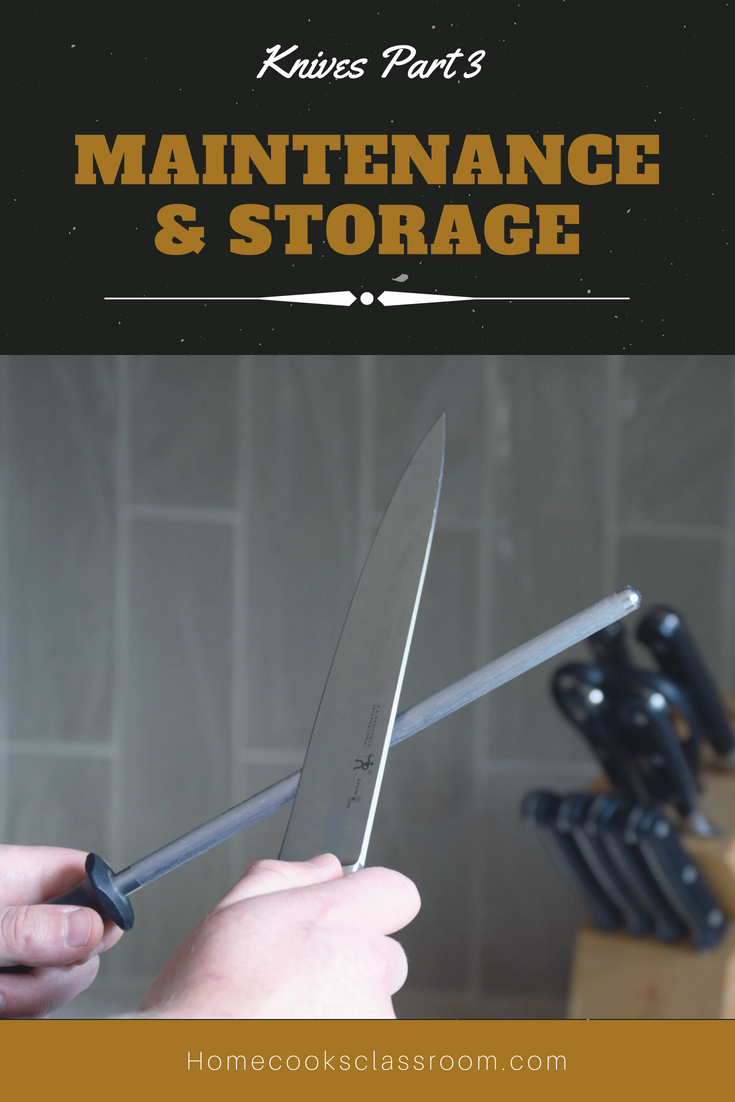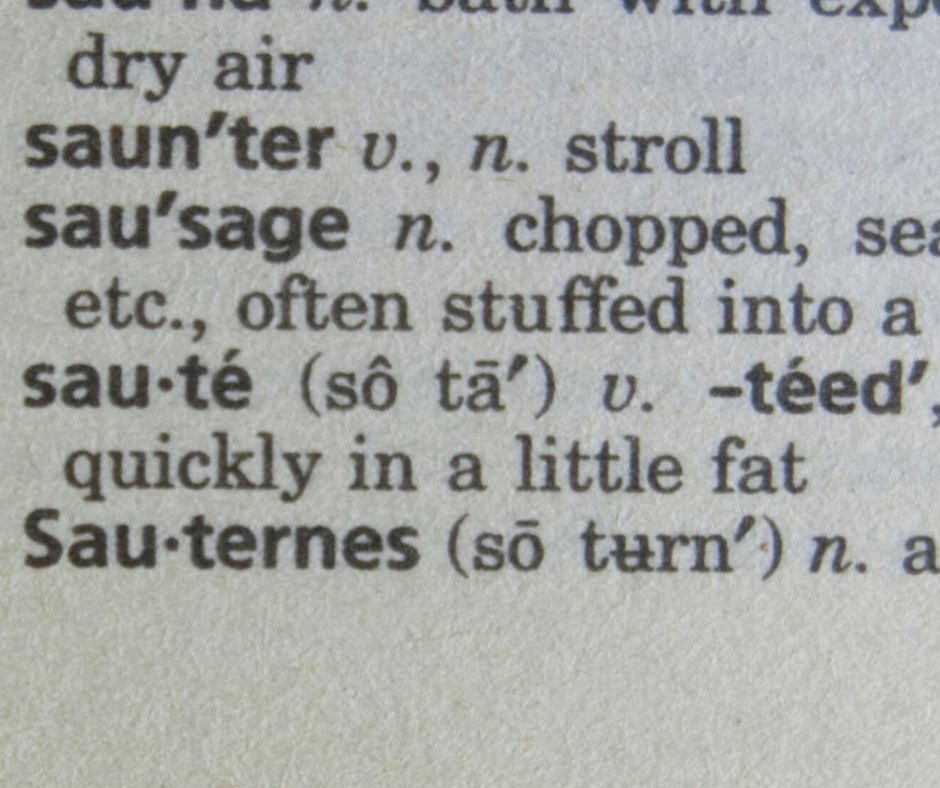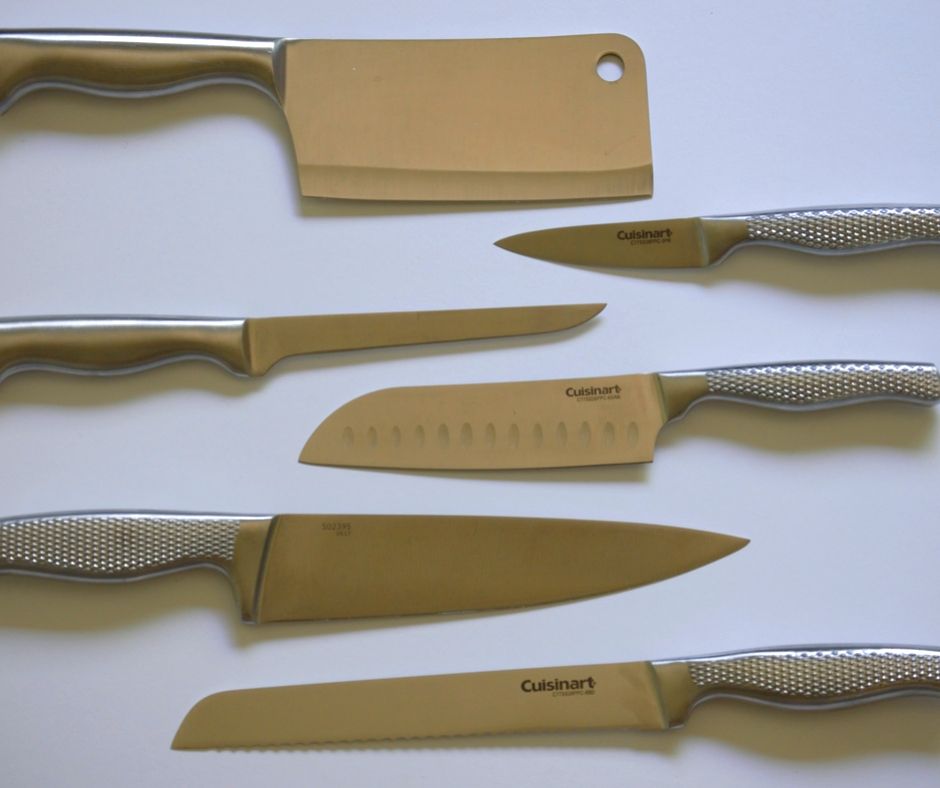
Hello class, and welcome to the third and last part of our lessons on knives. In the previous two lessons, we looked at the different types of knives, and how to properly use them in the kitchen. For today’s lesson, we are going to discuss knife maintenance, or more specifically, how to properly store, and sharpen your knives. So let’s get into it
Ways to store knives
Proper storage of your kitchen knives is important for two main reasons. First, it helps to protect them when they aren’t in use. Secondly, it keeps them organized in your kitchen, so you never have to wonder where a specific knife is when you need it the most. Below I have listed three of the most common ways to store kitchen knives, describing the pros and cons of them all.
A magnetic strip – This is a knife rack that you mount on your kitchen wall, which typically consists of a long piece of wood with a magnetic strip running through it. The magnetic strip catches your knives and allows you to store them vertically.
Pros
- Great for small kitchens, because it doesn’t take up counter, or drawer space.
- It provides easy access to your knives.
- Potentially causes less damage to your knife’s edge since the knives are stored sideways
Cons
- Can’t be used with ceramic knives, for obvious reasons
- Not the safest way to store knives, because you can easily place a knife on the magnet incorrectly in a hurry, or possibly dislodge another knife.
- Has the potential to put stress on the tang of your knife over time, thus diminishing the knife’s stability.
A knife block – The most common type of knife storage, a knife block is typically a large wooden block with slots on its top, in which your knives sit.
Pros
- Arguably the safest way to store your knives, as you have to pull your knives up and out of the block.
- Often has a space for storing honing steel, which is often difficult to place on a magnetic strip.
- Usually doesn’t require an additional purchase, because most knife sets come with a knife block.
Cons
- Takes up counter space, which is a premium in small kitchens
- Can damage the edge of your knife over time, because it will slide against the wood as you place or remove the knives
- Often it can only be used with the knives that you purchased with the knife block. This is because a knife block only has so many slots, all of which come in specific sizes meant for specific knives.
Simply in a kitchen drawer – While not the best option, I will admit that I do this with some of my knives. Just make sure that each knife stored in a drawer has a knife guard, which is a sleeve that goes over the blade of the knife.
Pros
- Depending on the size of your kitchen, and the amount of drawer space you have, you could potentially never run out of space for knives.
- You can store all shapes and sizes of knives in most drawers.
Cons
- Uses up drawer space.
- It has the potential to become cluttered, and unorganized if you have several knives being stored this way.
Ways to sharpen knives
Now, no matter how well you store your knives, they are likely to still see a lot of action in your kitchen. Thus all knives will need to be sharpened, or honed from time to time. But, before we get into the list we must discuss two aspects of knife sharpening.
First is the difference between sharpening, and honing. While they are often used interchangeably, they have two distinct meanings. Sharpening is a process in which one removes metal from a knife’s edge, therefore you would use this method only on knives that have become blunt in areas. Honing, on the other hand, is a process in which the metal of a knife’s edge is pushed back to the center, thus realigning it.
The second thing we need to discuss is the thinning of a knife blade. As knives are sharpened over time, the angle of the edge in comparison to the knife’s blade will increase. This difference in angle, while small, will gradually diminish the effectiveness of a knife’s ability to cut. However, the process of thinning solves this issue by allowing one to shave down the side of a knife’s blade and reestablish the proper angle.
I know, I know, this is all just a bunch of geometry mumbo jumbo right now, but trust me when I say that it is something that you will need to consider down the road. But with that out of the way. Let’s get into it. Just as in the above section, below I have listed four of the most common ways to sharpen or hone your knives, giving the pros, and cons of each.
Honing steel – Often incorrectly referred to as a sharpening rod, is a long steel stick that is used to reline knife edges.
Pros
- Often they don’t require an additional purchase, because they tend to be included in most knife sets.
- Allows for a quick tune-up, or honing of your blade.
- They are fairly easy to learn how to operate.
Cons
- Can’t be used to sharpen a dull blade, but rather is used to realign knife edges that have become warped or bent.
Sharpening stone – also known as whetstones, is a special type of rock with varying degrees of grit, which you can use to sharpen your knives.
Pros
- It allows for the most professional quality of sharpening.
- It is the only method that is capable of thinning a blade that has been sharpened repeatedly over the years.
- Can even save knives that have gone blunt.
Cons
- Requires a lot of time and experience to learn how to properly use
Mechanical sharpener – A machine, which allows you to pull the edge of a knife’s blade through and sharpen it.
Pros
- It is easy to operate and requires no prior experience to use.
- Does the job quickly, and with relatively good results.
Cons
- You can’t thin a blade with this method
- Typically results in a larger amount of material being lost, compared to a stone.
Local hardware store – Many hardware stores will offer knife sharpening services, and to be honest, I use this method the most because I own relatively cheap knives.
Pros
- No time or effort was lost.
- Doesn’t require you to learn anything, mainly because you are having someone else do the work for you
- A great option for cheap knife sets
Cons
- Cost money every time you want a knife sharpened
- The quality can vary depending on which store, and more importantly which employee is providing the service
<<< Back to Part 2: Safety & Cuts
Additional information
From Town Cutler
From Yuppie Chef



